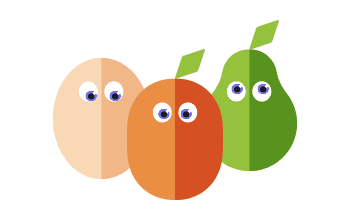I've seen people on these forums talk about these noodles and complain (understandably so) about the texture, so I wanted to share this tip I've found helpful before.
Obviously, follow all the package directions (rinse and soak overnight or longer in fresh water, changing frequently, to remove the weird metallic fishy taste.) But this tip is more about designing your recipe than anything that you do to the noodles (though dry frying for a while helps too, I've found).
The trick, I've found is to use a minimum of 3 contrasting textures in the other ingredients. That is, maybe mung bean sprouts, celery slices, mushrooms, and the protein of your choice. For some reason, I've found that if I've got those different textures going on as I chew, the boiled rubber band texture of the noodles fades quickly into the background. My mouth notices the celery/sprout/chicken things since they're, well, *something*, and the pasta becomes more like...oral white noise. And the more difference between the textures (the crunch of celery vs the crunch of carrot for example), the more it works.
But if I try just, say, sauce and mushrooms, no matter how tasty the sauce, I can't help but notice the texture.
One example of the technique is when I do the noodles pad thai style. I do normal prep, dry fry to de-moisture them, then mix a bit of prepared pad thai sauce with a little water to thin it. Then add that to the noodles and dry fry a while longer until the sauce is absorbed. Then garnish/mix with chopped hard boiled egg whites (or protein of choice, shrimp is also nice), lots of mung bean sprouts, *lots* of basil, and just a wee bit of chopped up peanuts, and then garnish with lime juice squeezes. The different textures of the protein/sprouts/basil/peanuts really helps offset the texture. I recommend not skipping the peanuts (you can seriously just use like 5 or 10 peanuts) because that type of crunch really contrasts nicely.
Anyway, I hope that some of you who've found the noodle texture offputting in the past find this technique useful.
Obviously, follow all the package directions (rinse and soak overnight or longer in fresh water, changing frequently, to remove the weird metallic fishy taste.) But this tip is more about designing your recipe than anything that you do to the noodles (though dry frying for a while helps too, I've found).
The trick, I've found is to use a minimum of 3 contrasting textures in the other ingredients. That is, maybe mung bean sprouts, celery slices, mushrooms, and the protein of your choice. For some reason, I've found that if I've got those different textures going on as I chew, the boiled rubber band texture of the noodles fades quickly into the background. My mouth notices the celery/sprout/chicken things since they're, well, *something*, and the pasta becomes more like...oral white noise. And the more difference between the textures (the crunch of celery vs the crunch of carrot for example), the more it works.
But if I try just, say, sauce and mushrooms, no matter how tasty the sauce, I can't help but notice the texture.
One example of the technique is when I do the noodles pad thai style. I do normal prep, dry fry to de-moisture them, then mix a bit of prepared pad thai sauce with a little water to thin it. Then add that to the noodles and dry fry a while longer until the sauce is absorbed. Then garnish/mix with chopped hard boiled egg whites (or protein of choice, shrimp is also nice), lots of mung bean sprouts, *lots* of basil, and just a wee bit of chopped up peanuts, and then garnish with lime juice squeezes. The different textures of the protein/sprouts/basil/peanuts really helps offset the texture. I recommend not skipping the peanuts (you can seriously just use like 5 or 10 peanuts) because that type of crunch really contrasts nicely.
Anyway, I hope that some of you who've found the noodle texture offputting in the past find this technique useful.






